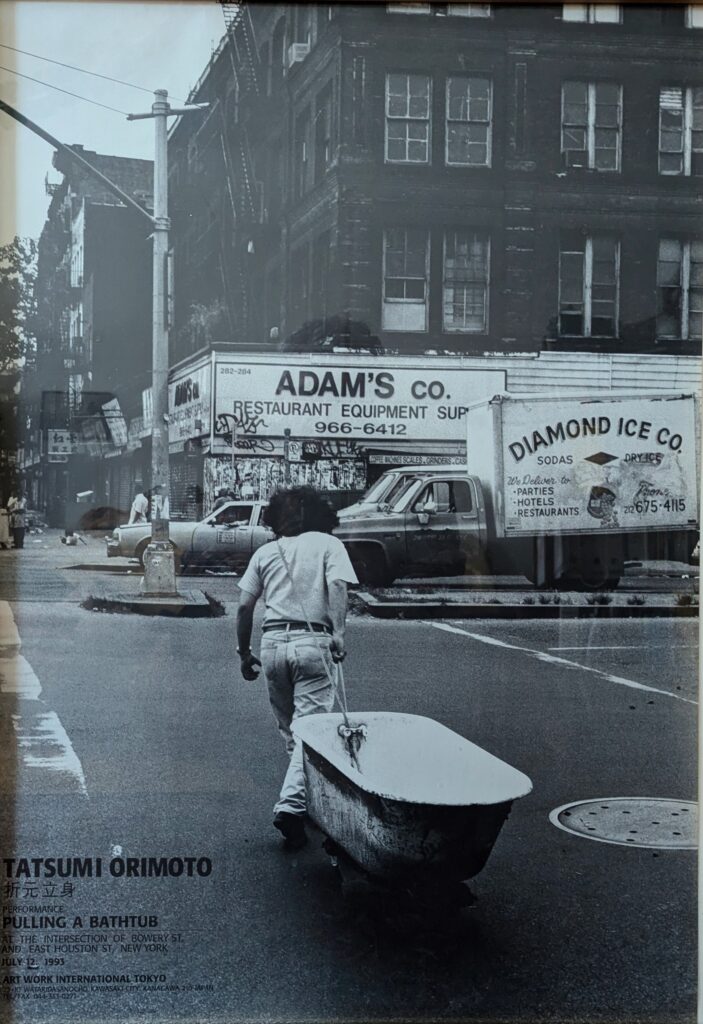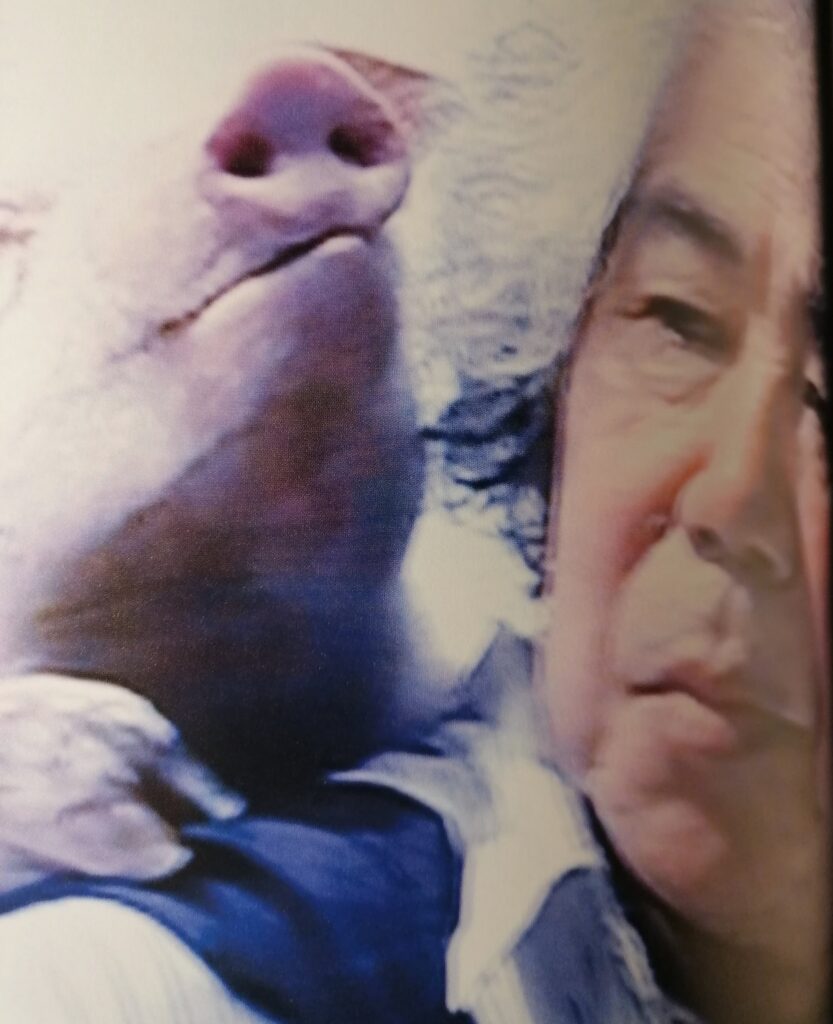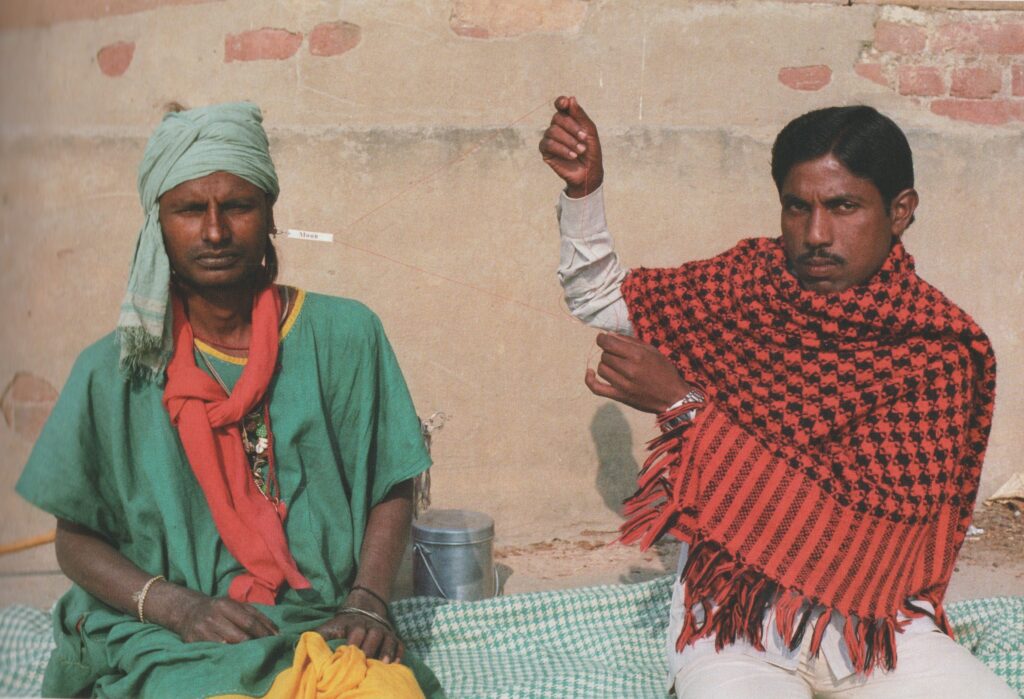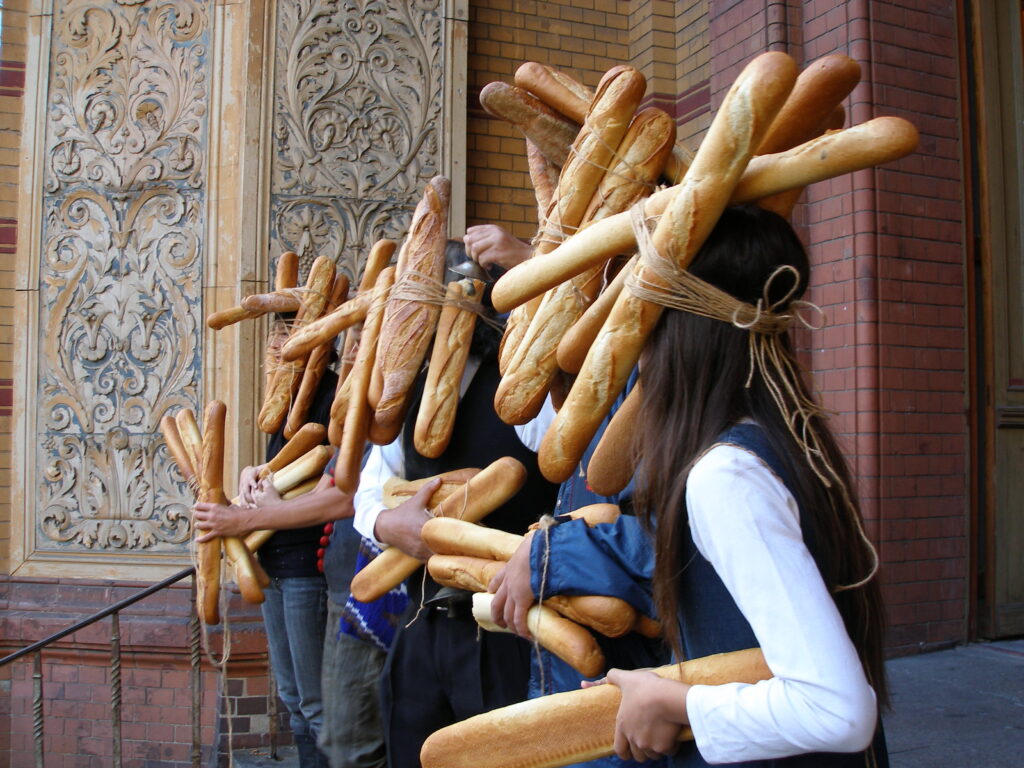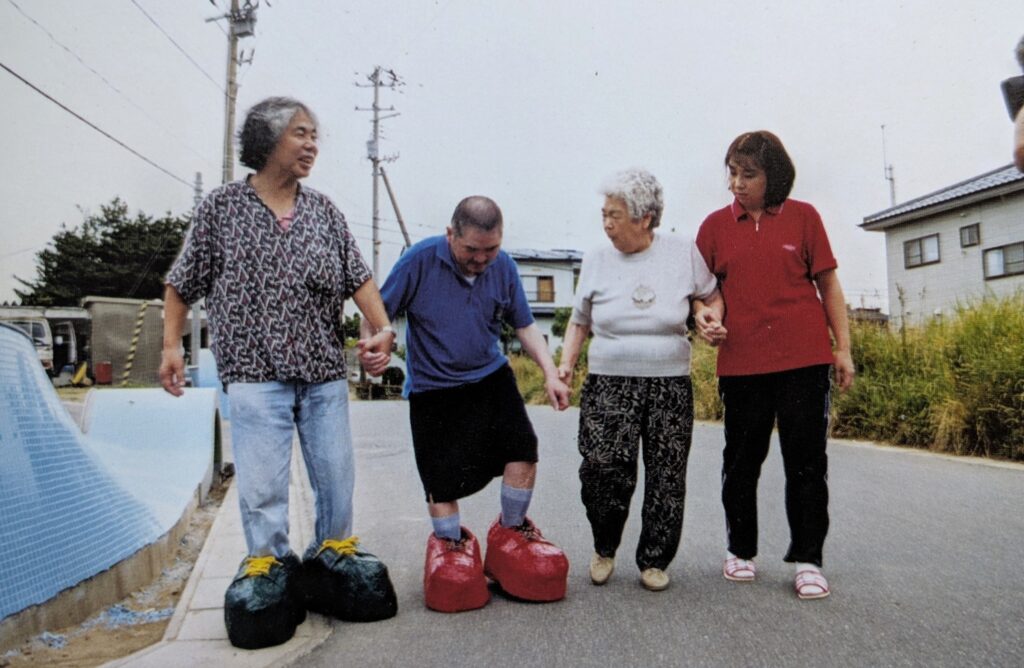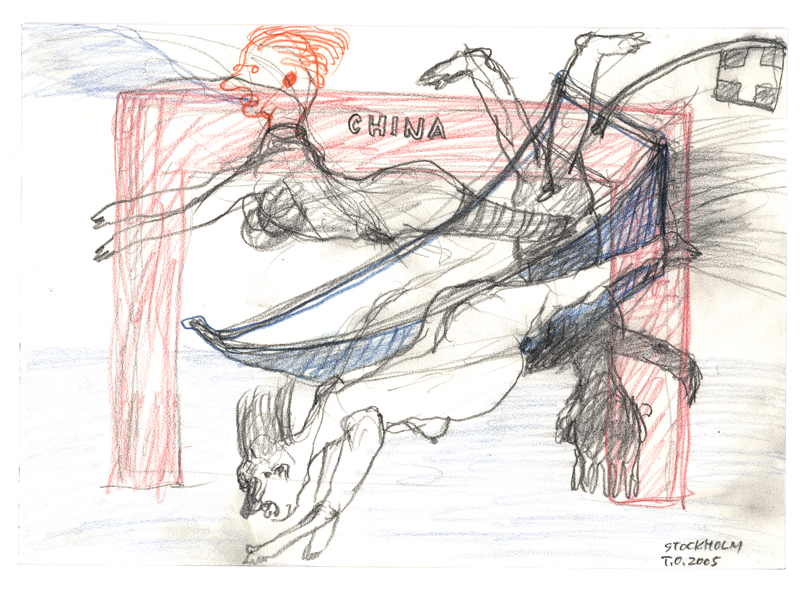Johannes Lothar Schröder on the death of Tatsumi Orimoto (1946-2025)
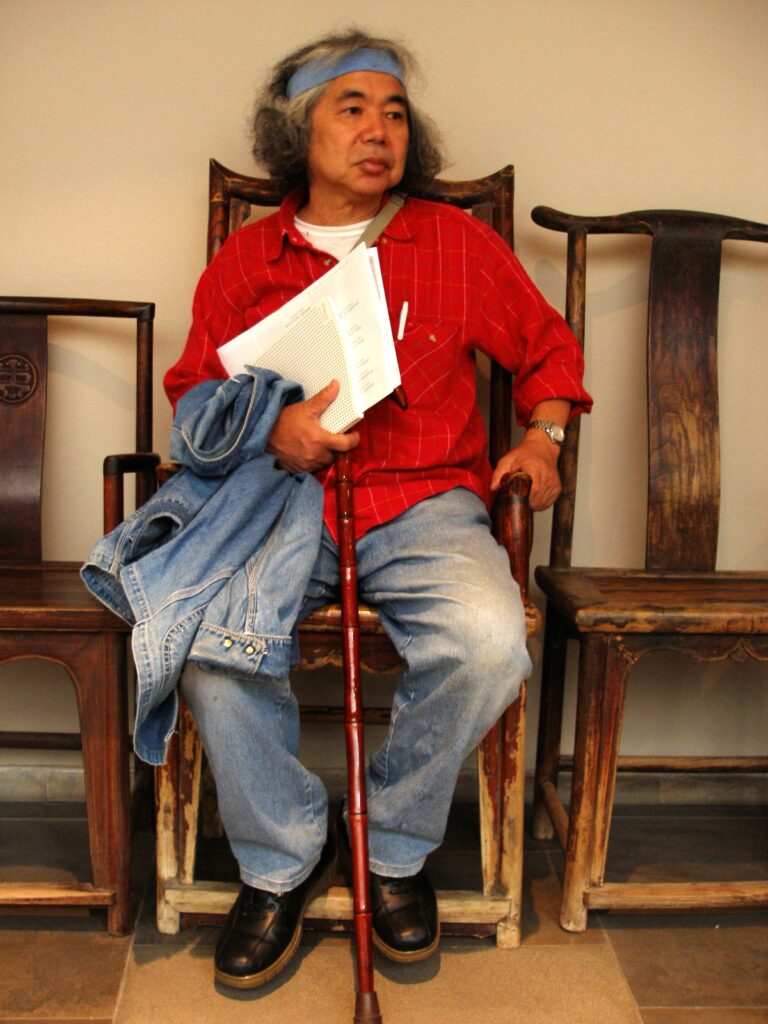
Photo: (c) johnicon (VG-Bild-Kunst, Bonn 2025)
Tatsumi Orimoto was a renowned Japanese artist who was born in Kawasaki City in 1946, where he died in 2025. He has worked internationally as a conceptual and performance artist, using photographs, drawings, posters, and mail art to announce and represent his ephemeral works. While studying in New York City, he assisted Nam June Paik and undertook public interventions there under the influence of Fluxus.
From his studio in Kawasaki, Orimoto initiated performances that revolved around carrying objects and communicating with animals such as chickens and pigs. His work „Carrying a Pig“ exemplifies this dual approach to interaction with objects and living beings.
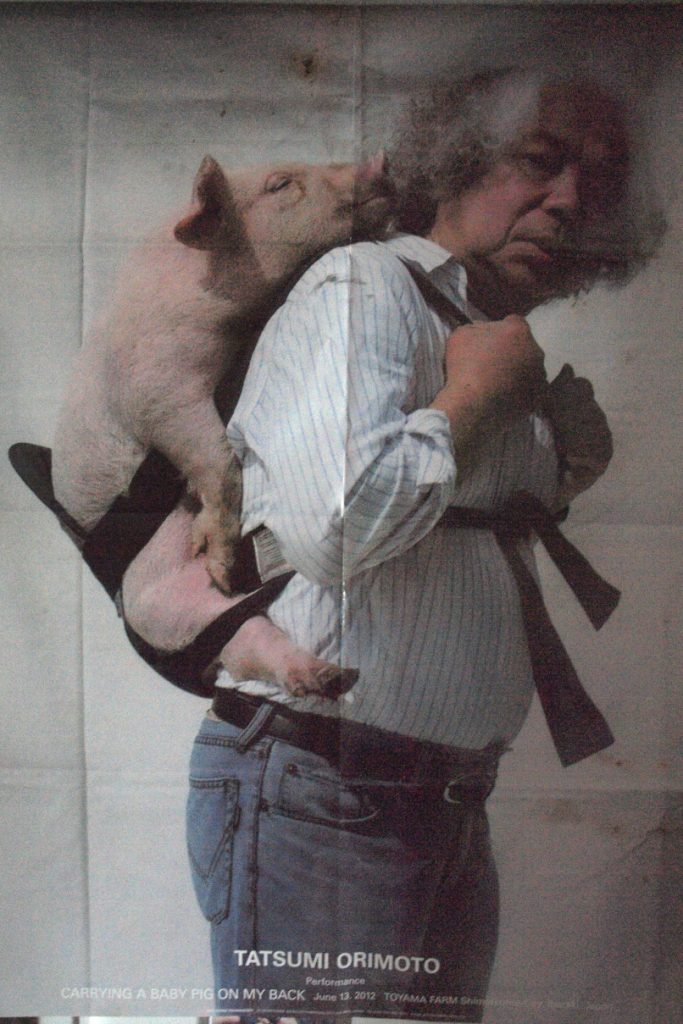
Since the 1980s, Orimoto has traveled extensively through China, Indonesia and India. In remote regions, he interacted with people who were experiencing the transition from an agrarian to an industrial society. He explored attitudes and behaviors through objects such as bracelets and ear clips, which he designed for communication purposes. For example, he attached ear clips to people’s ears so that they could be visibly connected to other people via a wire.
For photo of: Communication Art „Pull to Ear“, Varanasi, India, 1987 scroll down for German version
Later, Orimoto gained notoriety for covering his own head and the heads and faces of others with bread. He organized groups of people whose heads and faces were covered with numerous loaves of bread and baguettes, and led them through streets, public squares, museums, trains, etc., throughout America and many European countries.
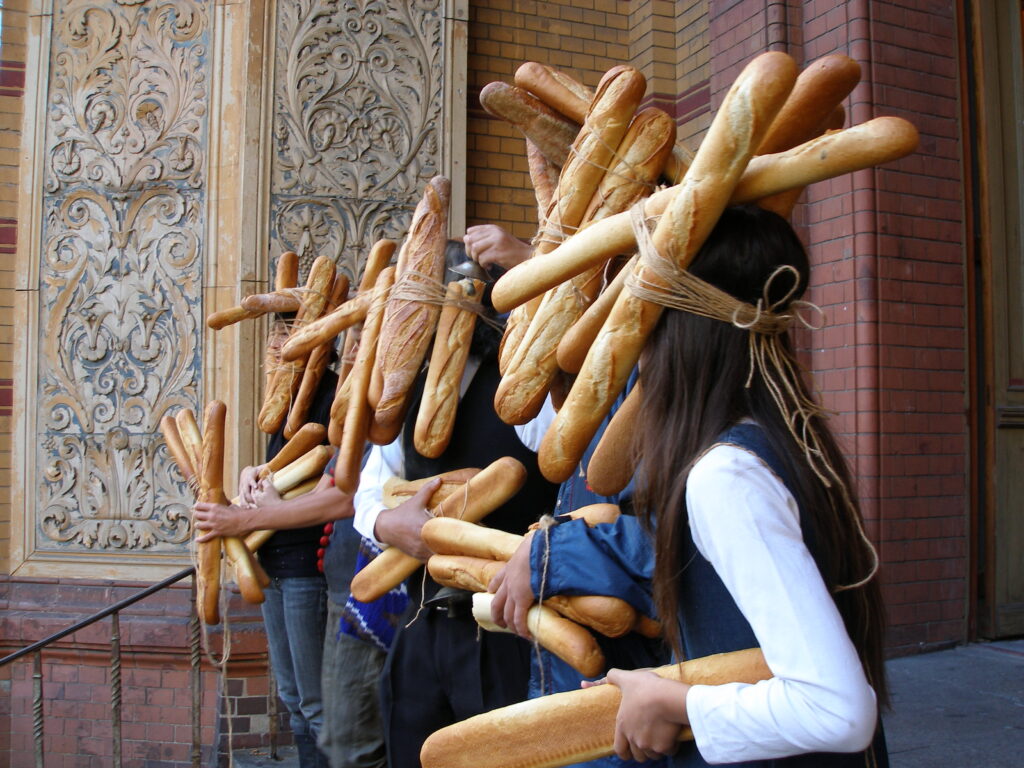
The cooperation with his mother and the people in the district also attracted a lot of attention. By incorporating them into his work, Orimoto gained attention not only in the art world, but also among doctors and therapists, recognizing his efforts to include people with Alzheimer’s and depression in social life.
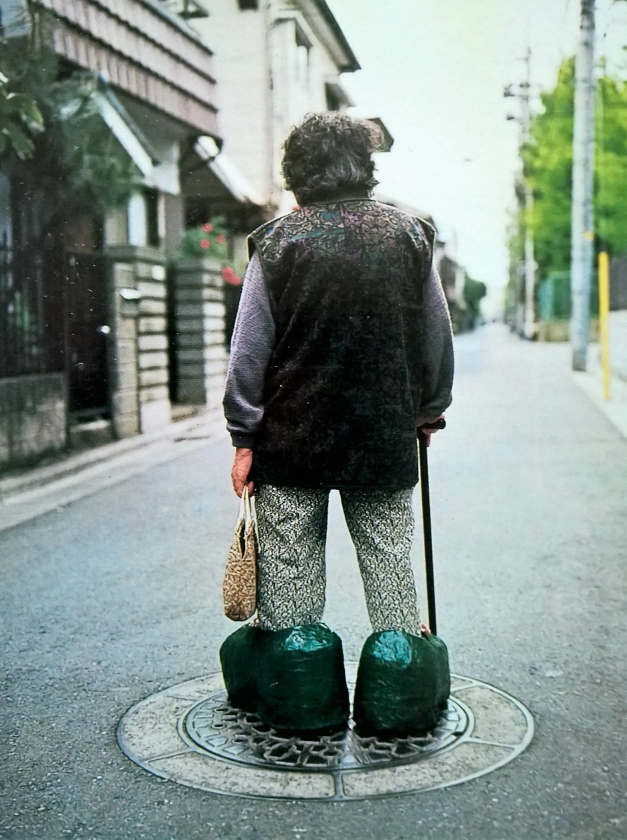
For Tatsumi Orimoto: Art + Medical Care: Collaboration Work with Alzheimer People, 2002, Katsuhira-en, Akita City, Japan scroll down to German version
Throughout his life, he drew while traveling, especially at airports, and after his daily duties in a local bar. The themes of these drawings revolve around violence, sexuality, living together in bathrooms, shops and at fairs. Orimoto was interested in fear and the dynamics of individuals and families in conflict situations.
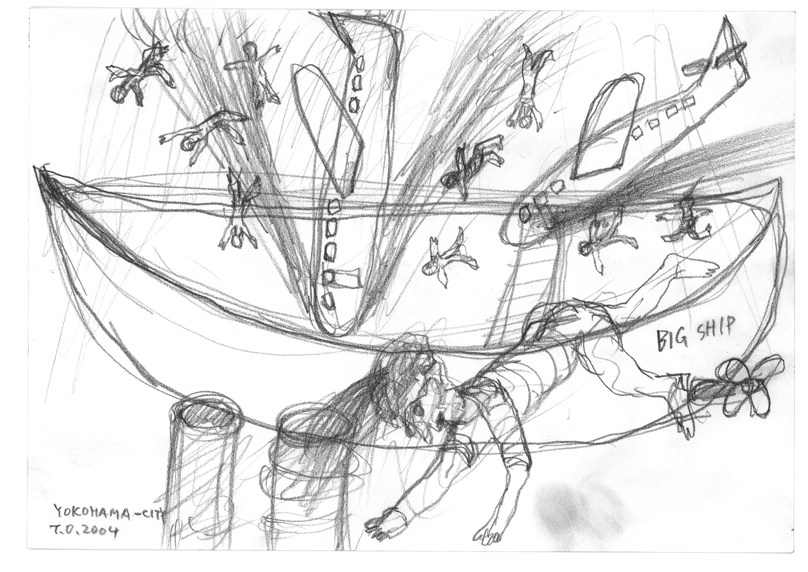
Tatsumi Orimoto: untitled (airport drawing) Yokohama-City 2004

